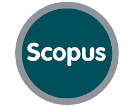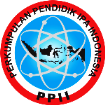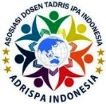Development of Smartphone-Based Physics Experimental Module (EFISMART)
Abstract
This study presents the development of EFISMART, a smartphone-based physics experiment module designed toenhance students’ conceptual understanding through interactive and hands-on learning experiences. The primary aimis to develop an innovative and effective educational tool that integrates modern technology into physics learning topromote deeper engagement and comprehension. Employing a mixed-methods approach with an explanatory design,this research combines quantitative and qualitative data to assess both validity and effectiveness. The module underwentexpert validation involving three specialists in physics, pedagogy, and language. The resulting average scores—4.32(86.4%), 4.15 (83.0%), and 4.60 (92.0%)—indicate a “Very Valid” classification across all domains. Thesefindings confirm that EFISMART meets scientific, pedagogical, and linguistic standards of quality. A limited trialinvolving 16 students demonstrated that the module effectively enhanced learner engagement, conceptual mastery, andexperimental skills. Overall, EFISMART offers a contextual and technology-enhanced approach to physicseducation, promoting practical competence and a more meaningful understanding of scientific concepts. The module istherefore recommended for broader implementation in educational settings to support active and inquiry-based learningin science
Keywords: EFISMART, phyphox, hands-on experiments, physics education, smartphone-based learning
Full Text:
PDFReferences
Adams, S. P., & Du Preez, R. (2022). Supporting Student Engagement Through the Gamification of Learning Activities: A Design-Based Research Approach. Technology, Knowledge and Learning, 1–20. https://doi.org/10.1007/s10758-021-09500-x
Alam, A. (2022). Contemplative Pedagogy: An Experiment with School Students for Demystifying the Philosophy of Contemplative Education. Resilience and Transformation in Global Restructuring, 1, 289–300. https://digital.casalini.it/9781871891607
Azizah, N. A., Hutami, A., & Norlita, N. (2023). Kecanggihan Smartphone sebagai Media Pembelajaran di Era Modern. Borneo Journal of Islamic Education, 3(1), 65–73. https://doi.org/10.21093/bjie.v3i1.6333
Banda, H. J., & Nzabahimana, J. (2021). Effect of Integrating Physics Education Technology Simulations on Students’ Conceptual Understanding in Physics: A Review of Literature. Physical Review Physics Education Research, 17(2), 23108. https://doi.org/10.1103/PhysRevPhysEducRes.17.023108
Barari, N., RezaeiZadeh, M., Khorasani, A., & Alami, F. (2022). Designing and Validating Educational Standards for E-Teaching in Virtual Learning Environments (VLEs), Based on Revised Bloom’s Taxonomy. Interactive Learning Environments, 30(9), 1640–1652. https://doi.org/10.1080/10494820.2020.1739078
Best, P., Marshall, G., Cushnan, J., McCafferty, P., & Booth, N. (2025). Immersive Virtual Environments as A Tool to Improve Confidence and Role Expectancy in Prospective Social Work Students: A Proof-Of-Concept Study. Social Work Education, 44(3), 617–635. https://doi.org/10.1080/02615479.2024.2334801
Bin-Tahir, S. Z., Suriaman, A., Hanapi, H., Iye, R., & Umanailo, M. C. B. (2020). Development of Buru Local Language Conversation Material Based on the Communicative-Interactive Approach for Elementary School Students. Solid State Technology, 63(2). https://solidstatetechnology.us/index.php/JSST/article/view/4108
Creswell, J. W., & Clark, V. L. P. (2017). Designing and conducting mixed methods research. Sage publications.
Cueva, A., & Inga, E. (2022). Information and Communication Technologies for Education Considering The Flipped Learning Model. Education Sciences, 12(3), 207. https://doi.org/10.3390/educsci12030207
Czaplinski, I., & Fielding, A. L. (2020). Developing a Contextualised Blended Learning Framework to Enhance Medical Physics Student Learning and Engagement. Physica Medica, 72, 22–29. https://doi.org/10.1016/j.ejmp.2020.03.010
Dessie, E., Gebeyehu, D., & Eshetu, F. (2023). Enhancing Critical Thinking, Metacognition, and Conceptual Understanding in Introductory Physics: The Impact of Direct and Experiential Instructional Models. EURASIA Journal of Mathematics, Science and Technology Education, 19(7), em2287. https://doi.org/10.29333/ejmste/13273
Djudin, T. (2023). Transferring of Mathematics Knowledge into the Physics Learning to Promote Students’ Problem-Solving Skills. International Journal of Instruction, 16(4). https://doi.org/10.29333/iji.2023.16414a
Eltouny, S., Nasser, A. A., Hefny, M., & Hosny, S. (2020). Development, Implementation and Evaluation of A Smartphone-Based Study Guide for Undergraduate Medical Students. Asian Journal of Education and Social Studies, 10(4), 1–15. https://doi.org/10.9734/AJESS/2020/v10i430272
Ernidawati, E., Darmadi, D., Fauza, N., Idris, I., Syaflita, D., Junaidi, M., & Sundari, P. D. (2025). Effectiveness of Experimental Tools for Testing the Permeability of Metal Materials to Increase Student Learning Motivation. Journal of Natural Science and Integration, 8(1), 140–148. http://dx.doi.org/10.24014/jnsi.v8i1.32799
Etz, K. E., & Arroyo, J. A. (2015). Small Sample Research: Considerations Beyond Statistical Power. Prevention Science, 16(7), 1033–1036. https://doi.org/10.1007/s11121-015-0585-4
Gumilar, S., & Ismail, A. (2023). The Representation of Laboratory Activities in Indonesian Physics Textbooks: A Content Analysis. Research in Science & Technological Education, 41(2), 614–634. https://doi.org/10.1080/02635143.2021.1928045
Gumisirizah, N., Muwonge, C. M., & Nzabahimana, J. (2023). Effect of Problem-Based Learning on Students’ Problem-Solving Ability to Learn Physics. Physics Education, 59(1), 015015. https://doi.org/10.1088/1361-6552/ad0577
Hartley, K., & Andújar, A. (2022). Smartphones and Learning: An Extension of M-Learning or A Distinct Area of Inquiry. Education Sciences, 12(1), 50. https://doi.org/10.3390/educsci12010050
Herwinarso, H., Koswojo, J., Pratidhina, E., Wijaya, A., & Lestari, T. (2024). Peningkatan Kualitas Pembelajaran Fisika Peserta Didik SMA di Surabaya melalui Pendampingan Eksperimen Fisika. Community Development Journal: Jurnal Pengabdian Masyarakat, 5(1), 1710–1714. https://doi.org/10.53769/jai.v4i3.762
Husni, H. (2020). The Effect of Inquiry-based Learning on Religious Subjects Learning Activities: An Experimental Study in High Schools. Jurnal Penelitian Pendidikan Islam, 8(1), 43–54. https://doi.org/10.36667/jppi.v8i1.434
Ikhtiyorovna, K. G. (2023). Embracing Technological Changes for a Better Future. American Journal of Language, Literacy and Learning in STEM Education (2993-2769), 1(9), 339–344. https://grnjournal.us/index.php/STEM/article/view/1510
Imtinan, N., & Kuswanto, H. (2023). The Use of Phyphox Application in Physics Experiments. JIPF, 8, 183–191. https://dx.doi.org/10.26737/jipf.v8i2.4167
Irvani, A. I., Dewi, A. P., Gunawan, A. G., & Rahmaniar, A. (2025). Gamification and Student Engagement: Evidence, Challenges, and Future Directions. Eduscape : Journal of Education Insight, 3(3), 150–163. https://doi.org/10.61978/EDUSCAPE.V3I3.937
Irvani, A. I., Muhajir, S. N., Amarulloh, R. R., Warliani, R., Lestari, I. F., & Mulvia, R. (2023). Pelatihan Perancangan Eksperimen Fisika berbasis Sensor Smartphone bagi Guru Fisika dan IPA di Kabupaten Garut. JPM: Jurnal Pengabdian Masyarakat, 2(3), 267–280. https://doi.org/10.52434/jpm.v2i3.2830
Irvani, A. I., Warliani, R., & Amarulloh, R. R. (2020). Pelatihan Pemanfaatan Teknologi Informasi Komunikasi Sebagai Media Pembelajaran. Jurnal PkM MIFTEK, 1(1), 35–41. https://doi.org/10.33364/miftek/v.1-1.35
Kaputa, V., Loučanová, E., & Tejerina-Gaite, F. A. (2022). Digital Transformation in Higher Education Institutions as A Driver of Social Oriented Innovations. Social Innovation in Higher Education, 61, 81–85. https://doi.org/10.1007/978-3-030-84044-0_4
Khasawneh, Y. J. A., Khasawneh, M. A. S., Alkhasawneh, T., Alwaely, S. A., & Al-Barakat, G. A. M. (2024). Using Smartphone Applications to Administer the Educational Process. Arts Educa, 39. https://artseduca.com/submissions/index.php/ae/article/view/259
Kilag, O. K. T., Maghanoy, D. A. F., Calzada-Seraña, K. R. D. Dela, & Ponte, R. B. (2024). Integrating Lev Vygotsky’s Sociocultural Theory into Online Instruction: A case study. Journal of Learning on History and Social Sciences, 1(1), 8–15. https://doi.org/10.61796/ejlhss.v1i1.6
Lina, E. Y., & Desnita, D. (2022). Validity and Reliability of Critical Thinking Instruments to Measure The Effectiveness of Context-Based Physics E-Module on Wave Materials. Jurnal Penelitian & Pengembangan Pendidikan Fisika, 8(1), 57–64. https://doi.org/10.21009/1.08106
Liu, G., & Fang, N. (2023). The Effects of Enhanced Hands-On Experimentation on Correcting Student Misconceptions About Work and Energy In Engineering Mechanics. Research in Science & Technological Education, 41(2), 462–481. https://doi.org/10.1080/02635143.2021.1909555
Maknun, J. (2020). Implementation of Guided Inquiry Learning Model to Improve Understanding Physics Concepts and Critical Thinking Skill of Vocational High School Students. International Education Studies, 13(6), 117–130. https://doi.org/10.5539/ies.v13n6p117
Mulia, S., & Murni, S. (2022). Implikasi Pembelajaran Praktikum Ilmu Pengetahuan Alam dalam Kemajuan Kognitif Siswa. SEARCH: Science Education Research Journal, 1(1), 1–11. https://e-jurnal.iainsorong.ac.id/index.php/jaser/article/view/1232
Mulyana, V., Asrizal, A., & Mufit, F. (2021). Meta Analisis Pengaruh Model Pembelajaran Inkuiri Terbimbing terhadap Pemahaman Konsep Fisika Siswa. Jurnal Penelitian Pembelajaran Fisika, 12(2), 166–172. https://doi.org/10.26877/jp2f.v12i2.8971
Nurhuda, T., & Irvani, A. I. (2021). Profil Kemampuan Mahasiswa Calon Guru Fisika dalam Menggunakan Perangkat Pembelajaran Daring. Jurnal Pendidikan Dan Ilmu Fisika, 1(1), 33–38. https://doi.org/10.52434/jpif.v1i1.1261
Nurrohman, A. (2021). Analisis Edugame Berbasis Android sebagai Media Pembelajaran di Sekolah Dasar. SINASIS (Seminar Nasional Sains), 2(1). https://proceeding.unindra.ac.id/index.php/sinasis/article/view/5349
Pasaribu, V. S. (2024). Efektivitas Penggunaan Media Pembelajaran Digital dalam Mendukung Pemahaman Konsep Fisika Pada Siswa SMP IT Bunayya Padangsidimpuan. Jurnal Pendidikan Inovatif, 6(1). https://ejurnals.com/ojs/index.php/jpi/article/view/3
Pherson-Geyser, M., de Villiers, R., & Kavai, P. (2020). The Use of Experiential Learning as A Teaching Strategy in Life Sciences. International Journal of Instruction, 13(3), 877–894. https://doi.org/ 10.29333/iji.2020.13358a.
Pratidhina, E., Lestari, T., Wijaya, A., Koswojo, J., Untung, B., Winata, S. W., & Kristiawan, Y. (2023). Pendampingan Eksperimen Fisika Pada Peserta Didik Sekolah Menengah Atas Dengan Materi Fluida dan Kelistrikan. Amal Ilmiah: Jurnal Pengabdian Kepada Masyarakat, 5(1), 130–138. https://doi.org/10.36709/amalilmiah.v5i1.138
Puspita, I. (2020). PhET Aplication Program: Strategi Penguatan Pemahaman Pembelajaran Jarak Jauh pada Materi Radiasi Benda Hitam melalui Percobaan Berbantu Lab Virtual dan Media Sosial. Jurnal Pendidikan Madrasah, 5(1), 57–68. https://doi.org/10.14421/jpm.2020.51-07
Putri, D. P., Ferdianto, F., & Fauji, S. H. (2020). Designing a Digital Teaching Module Based on Mathematical Communication in Relation and Function. Journal on Mathematics Education, 11(2), 223–236. https://doi.org/10.22342/jme.11.2.7320.223-236.
Rahayu, R., Rosita, R., Rahayuningsih, Y. S., Hernawan, A. H., & Prihantini, P. (2022). Implementasi Kurikulum Merdeka Belajar di Sekolah Penggerak. Jurnal Basicedu, 6(4), 6313–6319. https://doi.org/10.31004/basicedu.v6i4.3237
Rohman, S. M., Irvani, A. I., & Warliani, R. (2025). Gamification in Physics Education: Trends, Impacts, and Insights from the Last Decade. International Conference on Educational Innovations and Practices (ICIEP) 2024, 41–48. https://www.researchgate.net/publication/393750434_Gamification_in_Physics_Education_Trends_Impacts_and_Insights_from_the_Last_Decade
Rosdiana, D., Suherman, A., & Darman, D. R. (2019). Pengembangan Media Pembelajaran Virtual Physics Laboratory (ViPhyLab) Dalam Praktikum Hukum Kirchhoff. Journal of Natural Science and Integration, 2(2), 132–142. http://dx.doi.org/10.24014/jnsi.v2i2.7906
Sandberg, J., & Alvesson, M. (2021). Meanings of theory: Clarifying Theory Through Typification. Journal of Management Studies, 58(2), 487–516. https://doi.org/10.1111/joms.12587
Sriyansyah, S. P., & Anwar, K. (2021). Pembelajaran Gelombang Bunyi menggunakan Alat Musik Suling dan Gawai pada Pelajaran IPA SMP di Masa Pandemi Covid-19. Journal of Natural Science and Integration, 4(2), 175. http://dx.doi.org/10.24014/jnsi.v4i2.13277
Sutrio, S., Gunawan, G., Herayanti, L., & Nisrina, N. (2023). Penyuluhan Peran Laboratorium dan Pentingnya Praktikum dalam Pembelajaran Fisika. Indonesian Journal of Education and Community Services, 3(2), 75–82. https://journal.publication-center.com/index.php/ijecs/article/view/1590
Thiagarajan, S. (1974). Instructional development for training teachers of exceptional children: A sourcebook. https://eric.ed.gov/?id=ED090725
Tschisgale, P., Wulff, P., & Kubsch, M. (2023). Integrating Artificial Intelligence-Based Methods Into Qualitative Research in Physics Education Research: A Case for Computational Grounded Theory. Physical Review Physics Education Research, 19(2), 020123. https://doi.org/10.1103/PhysRevPhysEducRes.19.020123
DOI: http://dx.doi.org/10.24014/jnsi.v8i2.29206
Refbacks
- There are currently no refbacks.

Journal of Natural Science and Integration
E-ISSN: 2620-5092 P-ISSN: 2620-4967
Published By:
Department of Science Education, Faculty of Education and Teacher Training,
State Islamic University of Sultan Syarif Kasim Riau, Indonesia
Mailing Address:
Jl. H.R Soebrantas Km. 15 No. 155
Kelurahan Simpang Baru
Kecamatan Tuah Madani, Pekanbaru, Riau, Indonesia
Email: jnsi.tadrisipa@uin-suska.ac.id
Indexed By:
Journal of Natural Science and Integration is licensed under a Creative Commons Attribution 4.0 International License.


_-_Copyy2.png)






.jpg)
.png)
.jpg)
.jpg)




